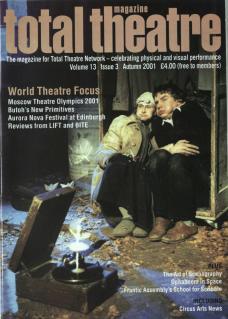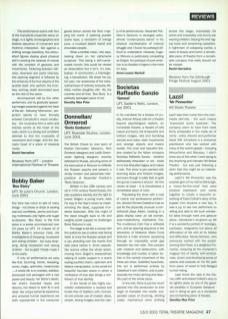In his manifesto for a theatre of cruelty, Antonin Artaud calls for a theatre beyond psychological realism, an immediate theatre, a theatre of wild nature and terror, full of beautiful and brilliant images, rare and horrifying sounds and notes, stark movements and strange objects and insane worlds. The cruel and beautiful theatre created by the Italian company Societas Raffaello Sanzio – whether deliberately ‘Artaudian' or not – holds on to this Artaudian legacy and makes it real. This show is jam-packed with stunning ideas and brilliant images, and even though it oddly fails to grab the gut as it seems it should – for this viewer at least – it is nonetheless a remarkable piece of work.
Populating the show with a cast of mainly non-professional performers, director Romeo Castelluci has an eye for the physically unusual: a contortionist plays Adam, twisting in a glass display case, an old woman, post-mastectomy, represents Eve. The murderous Cain has a withered arm, and an opening sequence in the laboratory of Madame Marie Curie features a male anorexic squeezing through an impossibly small gap between two iron rods. This concern with creation and destruction, with knowledge and murder, is taken further in the central movement of the three-act show. Subtitled ‘Auschwitz’, this act is performed entirely by Castelluci's own children, and is paradoxically the most calming and beautiful part of the whole piece.
In the end, there is just too much packed into this production to ever begin to translate into words: suspended cases of churning, whirling water; mechanical arms writhing across the stage; improbably fat actors and impossibly cute bunny-ear wearing children; blazing fire and raging noise and screeching cassettes. A nightmare of collapsing worlds; a vision of beauty and horror, a remarkable piece of theatre from a remarkable company that really should not be missed.

